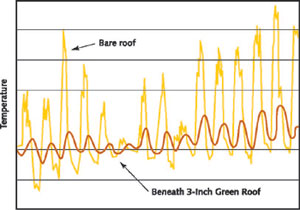
BUILDING MATERIALS:
Foundation:
Recycled concrete cemented with fly ash. When the old buildings are razed, crush the aggregate and recement it. It makes a really good foundation. Must have recycled steel rebars.
Walls:
Adobe strengthened with straw for houses. The straw, as Anna proposed, can be grown on fields needing rest for a year. Adobe is ideally suited for desert climates like the Galapagos (at least for half the year). Creates lots of jobs if you do it by hand, but there is a machine which makes bricks.
For large buildings like schools, office buildings, and industrial buildings, concrete walls cast on-site can be used.
For “fancy” buildings (libraries, lecture/concert halls, town hall, etc) very beautiful wood buildings can be created out of the invasive species of trees growing on the islands. For a more modern look, recycled steel makes very pretty and extremely stable structures. I think that our pretty much endless supply of wood could be the best thing that ever happened to the ecovillage because big, beautiful wood buildings are super impressive, long lasting, and really ecofriendly especially when chopping down wood actually HELPS the environment.
Roofing:
I’d absolutely love to build adobe houses with “greenroofs”. These are roofs with gardens planted on them. They decrease runoff, which would be terrific if we had adobe houses, because the bricks shouldn’t get water seeping in. They also decrease carbon dioxide, insulate the house in the summer and the winter, and invite songbirds in to the area, which makes more of a difference to residents than one might think. There are a few types of greenroofs: extensive and intensive. Intensive ones are those with about a foot of planting depth. Typically on flat roofs. You can even put ponds or gazebos up there, and make it a recreational space.
Rock/soil needed to sustain these things (MUST be engineered) is usually porous, like lava or pumice, which is obviously abundant on the Galapagos. Irrigation systems can be installed, but they must be watered. It’s actually a good place for rainwater to go, and can be pumped to the roof with a solar-powered pump. Since we’ll be using the ocean primarily for drinking water, and rain water isn’t plentiful enough all year round to merit a large collection effort, this might be an ideal solution.
Greenroofs extend the lifetime of a roof about 3 times. This is very desirable because people are none too rich in the Galapagos and we want things to STAY energy-efficient. It would be no good if the structures we set up started leaking.

I got this chart from http://www.wbdg.org/design/resource.php?cn=0&rp=41
Cool huh?
Insulation:
Cellulose insulation. Made of recycled newsprint, this would keep waste paper to a minimum on the islands. Carries no warning messages at all. Can be pneumatically blown in to place, very easy.
Tiling/floors:
Recycled glass tiling. Must paint surface white as tiles are translucent. 100% recycled, absolutely waterproof. Can be used outdoors for patios/walkways, or indoors.
Bamboo flooring, except in circumstances below. Harder than maple wood, much more stable than hardwoods. Bamboo grows very fast and all over the place, very replaceable. Can be sealed, but not stained. Beautiful.
Cork flooring when soundproofing is needed. Also perfect for layering over concrete floors, which makes this idea for office buildings. Nobody is disturbed, and you can build the entire structure of concrete without worrying about the floor being freezing.
Carpeting: PET carpeting made of recycled soda bottles. Supposedly very beautiful.
Cabinetry: PanTERRE paneling, by PanTERRE America Inc. The panels are made of old rice husks, peanut shells, or straw discarded in industrial plants. They can be used for roofing, exterior sheathing, indoor cabinetry. Can be finished with nearly anything. Very easy to handle.
PanTERRE America, Inc.
(703) 247-3160
PanTERRE panel